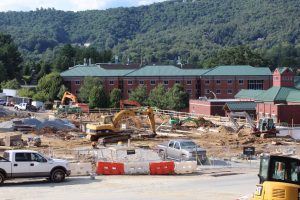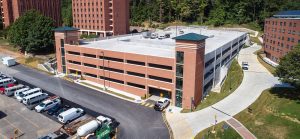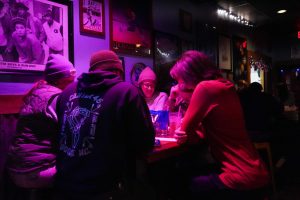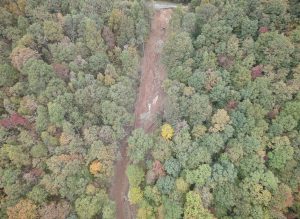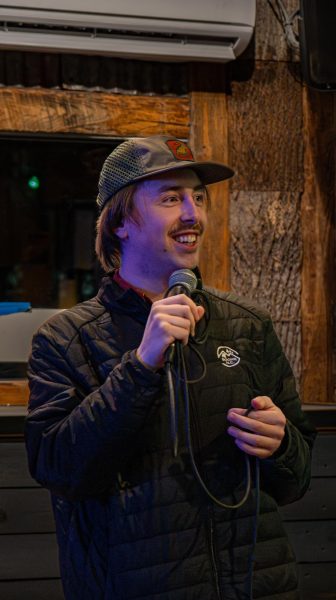“Leaf” it to App State’s arborists to beautify App State’s campus
August 28, 2019
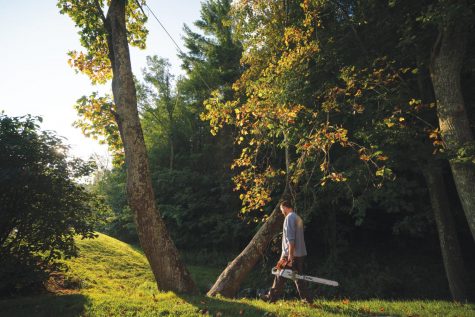
Jordan Gragg, an arborist at App State, holds an associates degree in Horticulture and has worked with the landscaping department for six years. For four generations, his family has grown trees outside of Blowing Rock.
When construction kicked off last February with the clearing of Duck Pond Field, campus arborists and landscapers removed a mangled pile of oak trees from the grounds where bonfires and tailgates once took place. The first severed trunks and dusted leaves served as a visible reminder that construction would bring change to both student and plant life.
Chris Erickson and Jordan Gragg, both International Society of Arboriculture certified arborists, specialize in managing around 3,400 trees and preserving App State’s Tree Campus USA university status. As the face of campus has changed with construction, so has their day-to-day tasks.
When campus construction started, Erickson, Gragg and their team of around 30 landscapers relocated several ginkgo trees out of Stadium Lot.
The group used air spading, a technique which clears the soil packed to the roots with compressed air, and successfully transplanted the trees to different spots around campus.
The Stadium Lot ginkgos are now seen across from Peacock, on Bodenheimer Drive and at Walker Hall.
Erickson explained relocation wasn’t the only challenge that arose with recent construction.
The construction of a pedestrian pathway connecting Kidd Brewer Stadium to the Schaefer Center brings construction close to one of the oldest trees on campus—the white oak near Wey Hall.
“It’s probably 300 years old, and we fought pretty hard to make sure that it’s not impacted at all,” Erickson said.
The planned pathway guides pedestrians away from the tree’s trunk. Construction workers will remove the old sidewalk to minimize hard surfaces near the tree. Erickson said these plans should benefit the white oak in the long term.
During construction, Erickson said he’s focused on “making sure it makes it through this.”
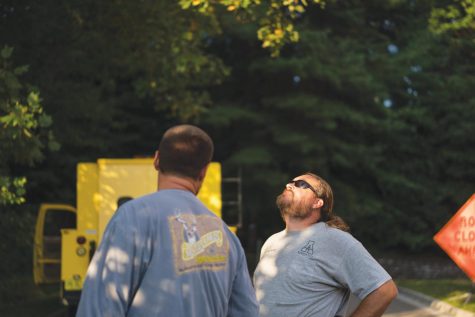
Temporarily, Erickson, Gragg and their team fenced off the tree, reminding those working and passing by to tread respectfully around it.
Preservation and relocation aren’t always possible. The arborists weren’t able to relocate the large oak trees that once stood on Duck Pond Field.
“If we’re taking one down, it’s because we have to for safety or if we can’t help it, like for construction sometimes, we don’t have a say in that as much,” Erickson said.
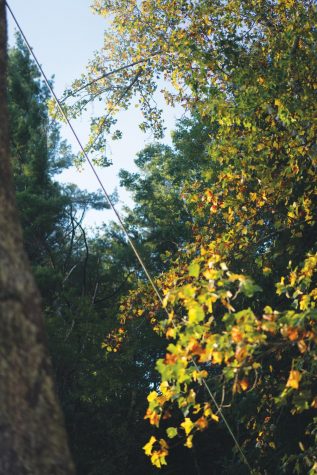
App State arborists and landscaping staff attached a cable to hold the leaning tulip poplar tree together.
Gragg said landscapers and volunteers will likely replace the removed trees during the biannual plantings the arborists facilitate in the fall and during Arbor Day in April. Hosting these events fulfills a piece of the yearly Tree Campus USA requirements, as listed by the Arbor Day Foundation.
If all requirements are met by the school, like the presence of a tree advisory committee and service-learning events that engage the community with tree-planting, the Tree Campus USA distinction is renewed for another year. App State has held the Tree Campus title since 2014.
Erickson and Gragg’s jobs include the management and risk assessment of App State’s trees. To keep the threshold for risk of injury or property damage low across campus, the arborists practice preventative measures such as structural pruning and careful planning when it comes to choosing planting space and tree species.
“We’re thinking about all the things a tree might encounter, ice and snow—and slackliners,” Erickson said.
In the last four years, the arborists have focused on planting more native species capable of withstanding the elements. Sugar maples, red maples, hawthorns and sweet gums are just a handful of the native trees identifiable on App State’s campus. Erickson said he plans on planting more native species after construction finishes.
“I want to make sure that the trees that are getting planted around the dorms over there are quality from the start: good foundation, quality species, good selection,” Erickson said. “We’ve got to have a good foundation for the trees to grow for years and years.”

